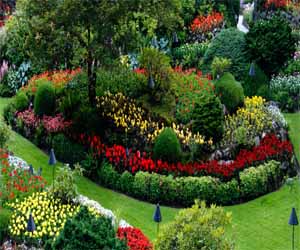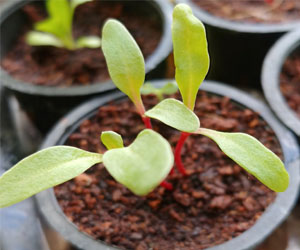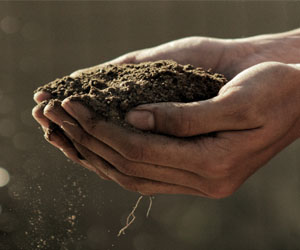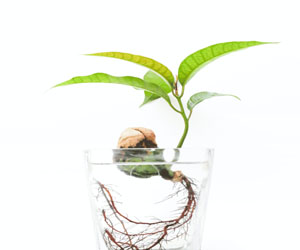


Exploring Soil-Based Farming

Soil-based farming, a traditional and time-tested method of cultivation, has been the backbone of agriculture for millennia. It involves the growth of crops and raising livestock directly in natural soil, offering a plethora of advantages and sustaining human food production for generations. In this article, we will delve into the world of soil-based farming, examining its significance, benefits, and its enduring role in modern agriculture.
The Essence Of Soil-Based Farming
Soil-based farming is the conventional practice of growing crops and raising animals directly in the natural ground, without the use of hydroponics, aquaponics, or other soilless methods. It relies on the fertility and nutrient content of the soil to support plant growth, and it has been the cornerstone of human agriculture since the dawn of civilization.
The Natural Nutrient Cycle
Soil-based farming taps into the natural nutrient cycle of the Earth. Organic matter, decaying plants, and animal waste enrich the soil with essential nutrients such as nitrogen, phosphorus, and potassium. These nutrients are absorbed by plants, providing the foundation for growth. Soil acts as a reservoir, storing water and nutrients, which are gradually released to plants as they need them. This natural cycle fosters a self-sustaining and ecologically friendly agricultural system.
Advantages Of Soil-Based Farming
Nutrient-Rich Soil: Over time, well-managed soil-based systems accumulate organic matter and nutrients, enhancing soil fertility.
Crop Diversity: Soil-based farming supports a wide range of crop varieties, catering to diverse dietary needs and regional preferences.
Sustainability: It promotes ecological balance by maintaining soil health and supporting diverse microbial life in the soil.
Cost-Efficiency: Soil-based farming often requires less initial investment compared to high-tech alternatives like hydroponics.
Resilience: Soil-based systems are more resistant to power outages or equipment failures, ensuring consistent food production.
Challenges And Adaptations
While soil-based farming has been a cornerstone of agriculture, it's not without its challenges. Soil erosion, nutrient depletion, and water pollution are concerns that require attention. In response, sustainable farming practices like crop rotation, cover cropping, and reduced tillage have been adopted to mitigate these issues. Modern soil testing and precision agriculture technologies also help optimize nutrient application.
The Future Of Soil-Based Farming
Soil-based farming continues to evolve to meet the demands of a changing world. Emerging agricultural technologies and practices are being integrated with traditional soil-based systems. For example, farmers are using GPS-guided tractors and drones to optimize planting and harvesting. Sustainable practices like organic farming and no-till agriculture aim to protect and enhance soil quality.
Soil-based farming remains a fundamental and enduring practice in agriculture. It embodies the harmonious relationship between humans and the land. As we strive to feed a growing global population while preserving the environment, soil-based farming remains at the core of sustainable agriculture, adapting to new challenges and technologies while preserving the rich tradition of nurturing the Earth to produce food.


The Art Of Minimalist Living
 Declutter And Downsize
Declutter And Downsize
The first step in simplifying your space is to declutter and downsize. Take a critical look at your belongings and ask yourself what truly adds value to your life. Consider the Marie Kondo approach of keeping only those items that "spark joy." Donate or sell what you no longer need, and let go of the excess.
Create Functional Spaces
A simplified space is a functional one. Ensure that every item has its place and purpose. This not only makes it easier to find what you need but also reduces visual clutter. Design your spaces with intention, and be mindful of the flow and purpose of each area.
Choose Quality Over Quantity
In the pursuit of simplification, focus on quality over quantity. Invest in well-made, durable items that are built to last. This not only reduces the need for constant replacements but also brings a sense of craftsmanship and beauty to your space.
Declutter Digitally
In our digital age, it's not just physical clutter that can overwhelm us; digital clutter can be equally burdensome. Simplify your digital life by organizing files, emails, and apps. Unsubscribe from unnecessary emails and unfollow social media accounts that don't bring value to your life.
Reduce Decor
In a simplified space, less is often more when it comes to decor. Choose a few meaningful pieces that resonate with you, rather than overwhelming your space with decorations.
Cultivating Wellness Through Nature
 Gardening is more than just a hobby; it's a therapeutic and health-enhancing activity that can significantly improve your physical, mental, and emotional well-being. From reducing stress to increasing physical activity, there are numerous ways in which gardening contributes to a healthier, happier life. In this article, we'll explore the many benefits of gardening for health and provide tips for harnessing the power of nature in your outdoor space.
Gardening is more than just a hobby; it's a therapeutic and health-enhancing activity that can significantly improve your physical, mental, and emotional well-being. From reducing stress to increasing physical activity, there are numerous ways in which gardening contributes to a healthier, happier life. In this article, we'll explore the many benefits of gardening for health and provide tips for harnessing the power of nature in your outdoor space.
Stress Reduction: The act of gardening, with its rhythmic tasks like planting, weeding, and watering, has a calming effect on the mind. Engaging with nature and the tactile experience of working in the garden can reduce stress and anxiety levels. The peace and tranquility of a garden offer a therapeutic escape from the demands of daily life.
Physical Exercise: Gardening is an excellent form of physical activity. Activities such as digging, planting, and weeding can provide a full-body workout, improving strength, flexibility, and cardiovascular health. Spending time outdoors in the fresh air and sunlight also promotes vitamin D synthesis and overall well-being.
Healthy Eating: Many gardeners grow their fruits and vegetables, which encourages a diet rich in fresh, organic produce. Homegrown fruits and vegetables are often more nutritious than store-bought alternatives, as they can be harvested at their peak ripeness and consumed immediately.
Mental Well-Being: Gardening has been linked to improved mental health. The sense of accomplishment that comes from nurturing plants and watching them flourish can boost self-esteem and mood. The creative aspect of garden design can also stimulate mental faculties.
Revolutionizing Cleaning For A Sustainable Future
 3. Eco-Friendly Packaging
3. Eco-Friendly Packaging
Green cleaning isn't limited to the contents of the cleaning products but also extends to the packaging. Innovations in packaging include the use of recycled and biodegradable materials, as well as more efficient and space-saving packaging to reduce transportation costs and emissions.
4. Smart Cleaning Appliances
Smart cleaning appliances equipped with sensors and AI technology are making cleaning more efficient and eco-friendly. These devices can optimize cleaning routines, minimizing resource waste by adjusting water usage, detergents, and energy consumption based on the specific cleaning needs. For example, robotic vacuum cleaners can map out your home and clean only the areas that need attention, saving both time and energy.
5. Waterless Cleaning Technologies
Waterless cleaning innovations are revolutionizing the way we think about cleaning tasks that traditionally require large amounts of water. Dry steam cleaning, for example, uses superheated steam to clean and sanitize surfaces without the need for chemicals or excessive water usage. These methods are not only more environmentally friendly but also more efficient.
6. Sustainable Cleaning Pads
Innovative cleaning pads made from sustainable materials like bamboo or recycled fibers are not only effective at capturing dirt and dust but are also biodegradable.
 Soil Testing: Start with a soil test to determine its pH level and nutrient content. This guides you in making necessary adjustments.
Soil Testing: Start with a soil test to determine its pH level and nutrient content. This guides you in making necessary adjustments.
Clear The Area: Remove any weeds, rocks, or debris from the planting area to provide a clean slate for your garden.
Amend The Soil: Depending on the soil test results, amend your soil with organic matter like compost, well-rotted manure, or peat moss. These materials improve soil structure and nutrient content.
Till The Soil: Use a tiller or a spade to mix in the amendments and break up compacted soil. The goal is to create a loose, well-aerated soil structure.
Mulch The Surface: Apply a layer of organic mulch to conserve moisture, regulate soil temperature, and suppress weed growth.
Maintain Soil Health: Regularly test and amend your soil as needed. Crop rotation and cover cropping can also help maintain soil fertility.
Water And Monitor: After planting, water your garden beds appropriately, keeping the soil consistently moist but not waterlogged. Monitor plant health for signs of nutrient deficiencies.
Soil preparation is not a one-time task; it's an ongoing process. Healthy soil is the foundation of a productive garden, and it requires attention and care. With the right preparation, your garden will thrive, producing abundant harvests and blooming with vibrant flowers. Whether you're a novice gardener or an experienced one, soil preparation is a critical step in your journey toward gardening success.
The Pursuit Of Water Efficiency
 Sustainability: As populations grow and climate change exacerbates water scarcity, efficient water use is necessary to meet the needs of current and future generations.
Sustainability: As populations grow and climate change exacerbates water scarcity, efficient water use is necessary to meet the needs of current and future generations.
Environmental Preservation: Efficient water use helps protect aquatic ecosystems, conserves habitats, and reduces the negative impacts of water extraction on nature.
Economic Benefits: By reducing water waste, businesses and industries can cut costs, enhance their resilience to water scarcity, and maintain profitability.
Strategies For Achieving Water Efficiency
Numerous strategies and technologies promote water efficiency:
Water-Saving Appliances: Low-flow toilets, high-efficiency washing machines, and water-efficient faucets help reduce domestic water use.
Smart Irrigation: Advanced irrigation systems equipped with sensors and weather data can optimize watering schedules, reducing water waste in agriculture and landscaping.
Leak Detection: Identifying and repairing leaks in water supply systems is a crucial step in preventing water loss.
Wastewater Treatment And Reuse: Treating and reusing wastewater for non-potable purposes like irrigation or industrial processes conserves freshwater resources.
Public Awareness: Educational campaigns and policies can encourage responsible water use among individuals and communities.
Positive Impacts Of Water Efficiency
Efficient water use offers a range of positive impacts:
Conserving Water Resources: By minimizing water waste, we ensure that enough freshwater is available for essential needs, even during periods of scarcity.
Reducing Energy Consumption: Water and energy are intrinsically linked. Water efficiency helps reduce the energy required for water treatment and transportation.
Protecting Ecosystems: Efficient water use reduces the diversion of water from natural habitats, preserving aquatic ecosystems and their biodiversity.
Leading The Way To Self-Sufficiency And Sustainability
 Off-grid pioneers are adventurers who have chosen to break free from the shackles of modern civilization, to take a step back from the hustle and bustle of urban life, and to reconnect with the natural world. They often opt for remote locations, nestled in the heart of nature, where they build sustainable homes, harness renewable energy sources, and cultivate their own food. Their goal is to reduce their ecological footprint and live in harmony with the environment.
Off-grid pioneers are adventurers who have chosen to break free from the shackles of modern civilization, to take a step back from the hustle and bustle of urban life, and to reconnect with the natural world. They often opt for remote locations, nestled in the heart of nature, where they build sustainable homes, harness renewable energy sources, and cultivate their own food. Their goal is to reduce their ecological footprint and live in harmony with the environment.
One of the defining characteristics of these pioneers is their resourcefulness. They are masters of ingenuity, using their creativity to overcome challenges that come with living off the grid. From constructing eco-friendly homes using natural materials to repurposing everyday items for new purposes, they exemplify the art of making do with what they have.
Adaptability is another key trait of off-grid pioneers. They understand that living off the grid requires flexibility and the ability to embrace change. These individuals are constantly learning new skills, from foraging for wild edibles to harnessing solar or wind energy, and are quick to adapt to the dynamic conditions of life in the wilderness.
Moreover, these pioneers are committed to reducing their environmental impact. They use renewable energy sources like solar panels and wind turbines, collect rainwater, and practice composting and recycling. By doing so, they serve as a shining example of eco-conscious living, demonstrating how it's possible to minimize harm to the planet even while residing in remote areas.
A Sustainable Approach To Water Management
 The Importance Of Water Harvesting Systems
The Importance Of Water Harvesting Systems
Water harvesting, also known as rainwater harvesting, represents a forward-thinking approach to water management for several reasons:
Conservation: Water harvesting helps conserve precious freshwater resources by utilizing rainwater for non-potable purposes, reducing the demand on conventional water sources.
Environmental Stewardship: These systems promote responsible water use, reduce runoff, and contribute to the health of local ecosystems by preventing soil erosion and aiding in groundwater recharge.
Water Resilience: In the face of climate change and increased instances of drought, water harvesting can provide a dependable source of water for a variety of applications.
Cost Savings: By reducing reliance on treated water from utilities, water harvesting systems can lead to lower water bills and savings for both homeowners and businesses.
Types Of Water Harvesting Systems
Rooftop Rainwater Harvesting: This is one of the most common and straightforward systems. Rainwater collected on rooftops is channeled through gutters and downspouts into storage tanks or cisterns. It is often used for landscape irrigation, flushing toilets, and other non-potable applications.